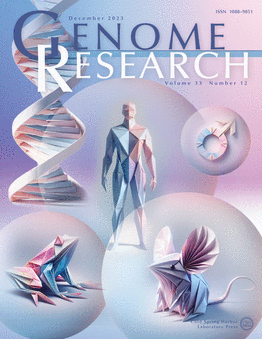Alternative splicing generates HER2 isoform diversity underlying antibody-drug conjugate resistance in breast cancer
IF 5.5
2区 生物学
Q1 BIOCHEMISTRY & MOLECULAR BIOLOGY
引用次数: 0
Abstract
Breast cancer (BC) is a heterogeneous disease that can be molecularly classified based on the expression of the ERBB2 receptor (also known as HER2) and hormone receptors. Targeted therapies for HER2-positive BC, such as trastuzumab, antibody-drug conjugates (ADCs) and tyrosine kinase inhibitors, have improved patient outcomes but primary/acquired resistance still pose challenges that can limit treatments' long-term efficacy. Addressing these obstacles is vital for enhancing therapeutic strategies and patient care. Alternative splicing, a post-transcriptional mechanism that enhances transcript diversity (isoforms), can produce proteins with varied functions, cellular localizations, or binding properties. Here, we comprehensively characterized the HER2 alternative splicing isoforms, assessed their expression in primary BC patients and cell lines, and explored their role in resistance to anti-HER2 therapies. We expanded the catalog of known HER2 protein-coding isoforms from 13 to 90, revealing distinct patterns of protein domains, cellular localizations, and protein structures, along with their antibody-binding sites. By profiling expression in 561 primary BC samples and mass spectrometry data, we discovered a complex landscape of HER2 isoform, revealing novel transcripts that were previously unrecognized and are not assessed in routine clinical practice. Finally, the assessment of HER2 isoform expression in BC cell cultures sensitive or resistant to trastuzumab and ADCs revealed that drug-resistant cells shifted their expression toward isoforms lacking antibody-binding domains. Our results broaden the understanding of HER2 isoforms, revealing distinct mechanisms of potential resistance to anti-HER2 therapies, particularly ADCs. This expanded landscape of HER2 isoforms emphasizes the crucial role of alternative splicing investigations in advancing precision-targeted cancer therapies.选择性剪接产生HER2亚型多样性是乳腺癌抗体-药物偶联耐药的基础
乳腺癌(BC)是一种异质性疾病,可以根据ERBB2受体(也称为HER2)和激素受体的表达进行分子分类。针对her2阳性BC的靶向治疗,如曲妥珠单抗、抗体-药物偶联物(adc)和酪氨酸激酶抑制剂,已经改善了患者的预后,但原发性/获得性耐药仍然构成挑战,可能限制治疗的长期疗效。解决这些障碍对于加强治疗策略和患者护理至关重要。选择性剪接是一种增强转录物多样性(同种异构体)的转录后机制,可以产生具有不同功能、细胞定位或结合特性的蛋白质。在这里,我们全面表征了HER2选择性剪接异构体,评估了它们在原发性BC患者和细胞系中的表达,并探讨了它们在抗HER2治疗耐药中的作用。我们将已知的HER2蛋白编码异构体的目录从13个扩展到90个,揭示了蛋白质结构域、细胞定位和蛋白质结构的不同模式,以及它们的抗体结合位点。通过分析561例原发性BC样本的表达和质谱数据,我们发现了HER2亚型的复杂格局,揭示了以前未被识别且未在常规临床实践中评估的新转录本。最后,对对曲妥珠单抗和adc敏感或耐药的BC细胞培养物中HER2亚型表达的评估显示,耐药细胞将其表达转向缺乏抗体结合结构域的亚型。我们的研究结果拓宽了对HER2亚型的理解,揭示了抗HER2治疗,特别是adc的潜在耐药机制。HER2亚型的扩展强调了选择性剪接研究在推进精确靶向癌症治疗中的关键作用。
本文章由计算机程序翻译,如有差异,请以英文原文为准。
求助全文
约1分钟内获得全文
求助全文
来源期刊

Genome research
生物-生化与分子生物学
CiteScore
12.40
自引率
1.40%
发文量
140
审稿时长
6 months
期刊介绍:
Launched in 1995, Genome Research is an international, continuously published, peer-reviewed journal that focuses on research that provides novel insights into the genome biology of all organisms, including advances in genomic medicine.
Among the topics considered by the journal are genome structure and function, comparative genomics, molecular evolution, genome-scale quantitative and population genetics, proteomics, epigenomics, and systems biology. The journal also features exciting gene discoveries and reports of cutting-edge computational biology and high-throughput methodologies.
New data in these areas are published as research papers, or methods and resource reports that provide novel information on technologies or tools that will be of interest to a broad readership. Complete data sets are presented electronically on the journal''s web site where appropriate. The journal also provides Reviews, Perspectives, and Insight/Outlook articles, which present commentary on the latest advances published both here and elsewhere, placing such progress in its broader biological context.
 求助内容:
求助内容: 应助结果提醒方式:
应助结果提醒方式:


